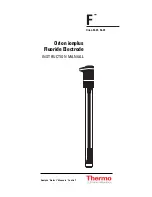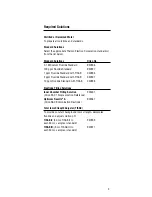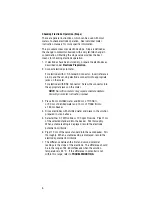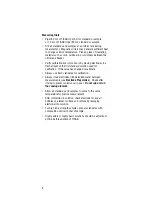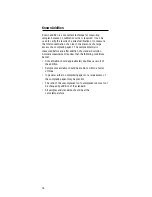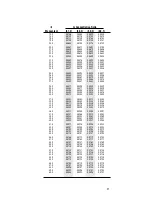
Checking Electrode Operation (Slope)
These are general instructions, which can be used with most
meters to check electrode operation. See individual meter
instruction manuals for more specific information.
This procedure measures electrode slope. Slope is defined as
the change in millivolts observed with every tenfold change in
concentration. Obtaining the slope value provides the best
means for checking electrode operation.
1. If electrodes have been stored dry, prepare the electrodes as
described under
Electrode Preparation.
2. Connect electrodes to meter.
For electrode with U.S. Standard Connector: Insert reference
pin-tip and the sensing electrode connector into appropriate
jacks on the meter.
For electrode with BNC Connector: Screw the connector into
the appropriate jacks on the meter,
NOTE:
Non-Orion meters may require special adapters.
Consult your meter instruction manual.
3. Place 50 mL distilled water and 50 mL of TISAB II,
or 90 mL of distilled water and 10 mL of TISAB III into
a 150 mL beaker.
4. Rinse electrodes with distilled water and place in the solution
prepared in step 3 above.
5. Select either 0.1 M Fluoride or 100 ppm Fluoride. Pipet 1 mL
of the selected standard into the beaker. Stir thoroughly.
When a stable reading is displayed, record the electrode
potential in millivolts.
6. Pipet 10 mL of the same standard into the same beaker. Stir
thoroughly. When a stable reading is displayed, record the
electrode potential in millivolts.
7. The difference between the first and second potential
readings is the slope of the electrode. The difference should
be in the range of 54-60 mV/decade when the solution
temperature is 25 °C. If the difference in potential is not
within this range, refer to
TROUBLESHOOTING.
6
Содержание 96-09
Страница 7: ...4 ...

